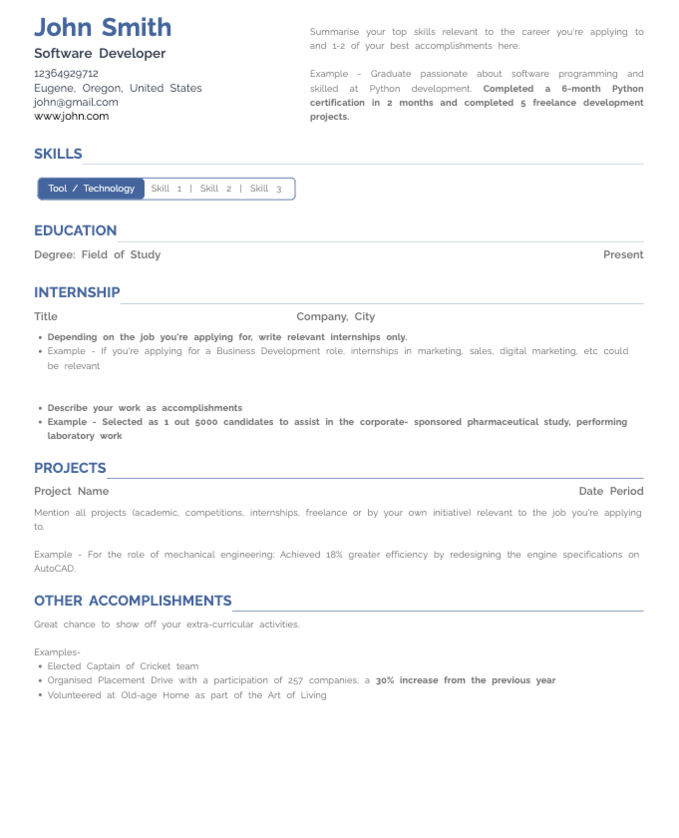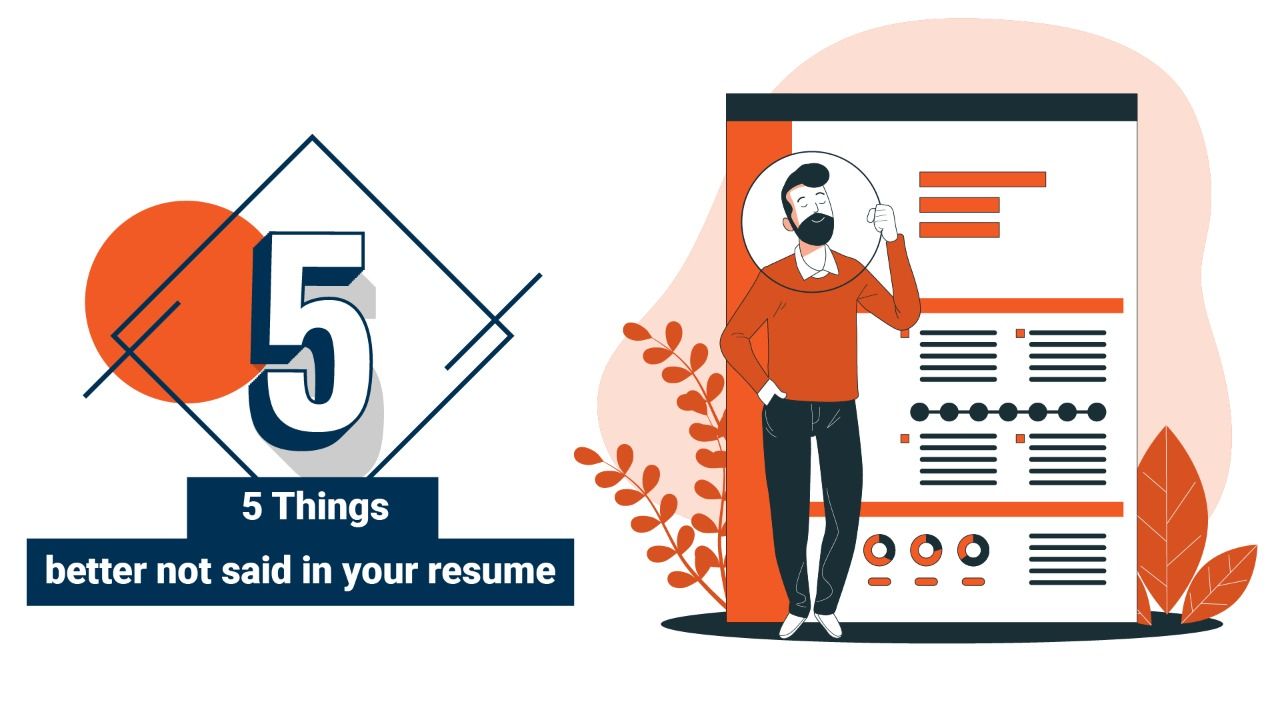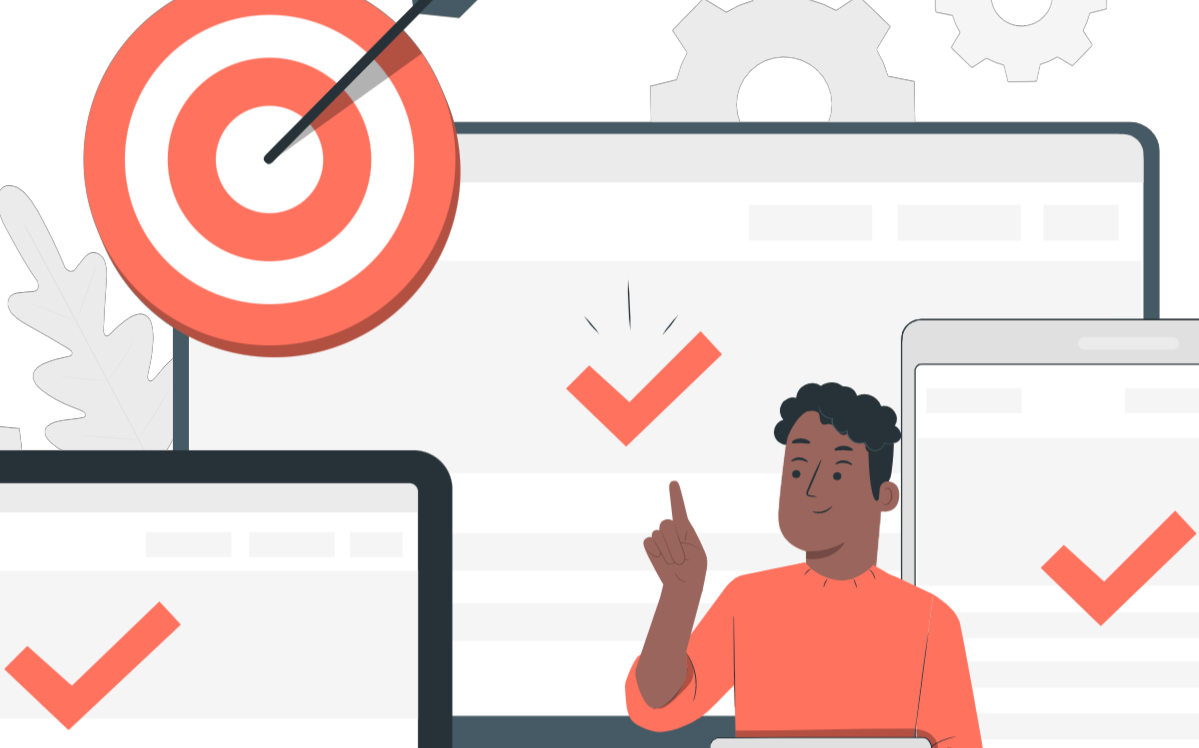10+ Resume Writing Tips For Students in 2023
8 min read
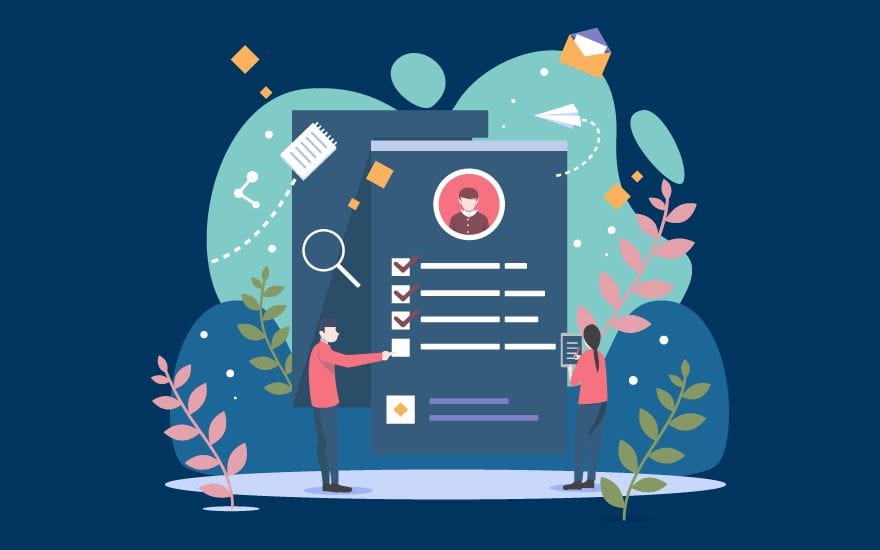
Are you a student preparing to enter the job market in 2023?
Crafting an effective resume is a crucial step in your journey towards securing your dream job or internship.
Even as a student with limited work experience, you can create a compelling resume that highlights your skills, achievements, and potential.
To help you do that, we are here with the answers of some fundamental resume building questions for students, that include:
- What are the suitable resume formats for students?
- How to write a resume for students?
- Is a cover letter required with a resume for students?
As students, we can assume that you don’t have much resume-building experience. If that is the case, we recommend using HyreSnap Online Resume Builder. It is a free AI based resume-making platform that crafts impeccable resumes in easy steps.
Let’s move one and check the ten valuable resume writing tips especially for students in 2023.
For students or recent graduates, choosing the right resume format is crucial to effectively showcase your skills, experiences, and potential to employers. Here are three suitable resume formats for students:
The chronological resume is the most common and straightforward format. It highlights your work experience in reverse chronological order, starting with the most recent position. This format is suitable if you have relevant work experience or internships that you want to emphasize. Here's how to structure a chronological resume for students:
- Header: Include your name, contact information (phone number, email address), and optionally, a LinkedIn profile link.
- Objective or Summary: Write a brief objective or summary statement that highlights your career goals, skills, and what you bring to the table.
- Education: List your educational background, including your degree, major, university or college name, graduation date (or expected graduation date), and GPA if it's strong.
- Relevant Coursework: If your coursework is relevant to the job you're applying for, you can create a section to highlight these courses.
- Work Experience: Include any internships, part-time jobs, or volunteer experiences. For each position, provide the job title, company or organization name, location, and dates of employment. Describe your responsibilities and achievements in bullet points.
- Skills: Highlight your relevant skills, including technical, soft, and transferable skills. Be sure to tailor this section to match the job requirements.
- Activities and Involvements: Mention any extracurricular activities, clubs, or student organizations you've been a part of, especially if they demonstrate leadership or teamwork skills.
- Awards and Honors: If you've received any awards or academic honors, showcase them in this section.
A functional resume focuses on your skills and qualifications rather than your work history. This format is suitable if you have limited work experience but want to highlight your skills and abilities. Here's how to structure a functional resume:
- Header: Include your contact information and a LinkedIn profile link.
- Objective or Summary: Write a concise objective or summary statement that emphasizes your skills, qualifications, and career goals.
- Skills: Create a prominent skills section where you list your technical, soft, and transferable skills. Tailor these skills to match the job you're applying for.
- Education: Provide details about your education, including your degree, major, university or college name, graduation date (or expected graduation date), and GPA if it's strong.
- Relevant Coursework: If you have taken coursework relevant to the job, include a section that highlights these courses.
- Projects: Showcase any academic or personal projects that demonstrate your skills and abilities. Describe the projects, your role, and the outcomes achieved.
- Extracurricular Activities: Mention any extracurricular involvement, leadership roles, or volunteer work that showcases your skills and character.
- Awards and Honors: Highlight any awards or academic honors you've received.
The combination resume, as the name suggests, combines elements of both the chronological and functional formats. It allows you to emphasize your skills and qualifications while including a work history section. This format is suitable for students with some work experience and a strong skill set. Here's how to structure a combination resume:
- Header: Include your contact information and a LinkedIn profile link.
- Objective or Summary: Write a brief objective or summary statement that highlights your skills, qualifications, and career goals.
- Skills: Create a skills section where you list your relevant technical, soft, and transferable skills.
- Education: Provide details about your education, including your degree, major, university or college name, graduation date (or expected graduation date), and GPA if it's strong.
- Relevant Coursework: Include a section highlighting relevant coursework if it's applicable.
- Work Experience: Detail your work experience, including internships, part-time jobs, or volunteer experiences. Use bullet points to describe your responsibilities and achievements.
- Projects: Showcase any academic or personal projects that demonstrate your skills and abilities.
- Extracurricular Activities: Mention any extracurricular involvement, leadership roles, or volunteer work that showcases your skills and character.
- Awards and Honors: Highlight any awards or academic honors you've received.
Select the resume format that best suits your unique background and career goals. Remember to tailor your resume to each job application, emphasizing the skills and experiences that are most relevant to the specific position you're applying for.
Writing an effective resume as a student can be challenging, especially if you have limited work experience. However, a well-crafted resume can still showcase your skills, academic achievements, and potential to prospective employers. Here's a step-by-step guide on how to write a resume for students:
Decide on the resume format that best suits your situation:
- Chronological Resume: Emphasizes work experience, which is great if you have relevant job experience or internships.
- Functional Resume: Focuses on skills and qualifications, ideal for students with limited work experience.
- Combination Resume: Combines elements of both chronological and functional formats, allowing you to highlight skills and work experience.
At the top of your resume, include a header with your name, contact information (phone number, email address), and optionally, a LinkedIn profile link.
Create a brief objective or summary statement that highlights your career goals, skills, and what you bring to potential employers. Tailor this section to match the job you're applying for.
List your educational background, including your degree, major, university or college name, graduation date (or expected graduation date), and GPA if it's strong. If you have a high GPA, consider placing it prominently on your resume. Additionally, we suggest mentioning any relevant coursework, especially if it's related to the job you're applying for.
Create a dedicated section to highlight your technical, soft, and transferable skills. Emphasize skills that are relevant to the job you're seeking.
Detail any work experience you have, including part-time jobs, internships, volunteer work, or freelance gigs. Even if the work wasn't directly related to your field of study, highlight transferable skills and achievements.
For each position, provide the job title, company or organization name, location, and dates of employment. Use bullet points to describe your responsibilities and achievements. Focus on results and quantify your accomplishments whenever possible.
If you've completed significant academic or personal projects, create a section to showcase them. Describe the projects, your role, and the outcomes achieved.
Mention any extracurricular involvement, such as clubs, organizations, leadership roles, or volunteer work. These activities can demonstrate skills like teamwork, leadership, and time management. Also, you can include any relevant awards or recognition you've received.
Customize your resume for each job application by aligning it with specific job requirements and using keywords from the job posting. Emphasize skills and experiences that are most relevant to the position.
Eliminate spelling and grammatical errors, and ensure formatting is consistent and easy to read. Consider seeking feedback from a trusted friend or mentor.
Save your final resume as a PDF file to ensure it retains its formatting when viewed on different devices.
If you're unsure about the content or format of your resume, consider seeking guidance from a career counselor or utilizing resources from your school's career services department.
While a cover letter is not always required with a resume for students, it can be a valuable addition to your job application. Whether or not you include a cover letter depends on the specific job application requirements and your personal preferences. Here are some considerations:
- Job Posting Requests: If the job posting explicitly requests a cover letter, it is essential to include one. Ignoring this requirement may result in your application being disqualified.
- Opportunity to Stand Out: A well-crafted cover letter can help you stand out among other applicants. It provides an opportunity to express your enthusiasm for the position and showcase your communication skills.
- Explain Unique Circumstances: If you have unique circumstances, such as a significant career change, gaps in employment, or a non-traditional academic background, a cover letter allows you to provide context and address these aspects.
- Emphasize Fit: A cover letter enables you to explain why you are a good fit for the role and the organization. You can align your skills, experiences, and aspirations with the job requirements and company culture.
- Demonstrate Interest: Including a cover letter demonstrates that you've taken the time to research the organization and are genuinely interested in the position, which can make a positive impression on employers.
- Not Requested: If the job posting does not mention a cover letter and explicitly asks for a resume only, it may not be necessary to include one. Some employers have a clear preference for resumes only.
- Highly Standardized Applications: In some industries where applications are highly standardized, such as online job applications using applicant tracking systems (ATS), the focus may be primarily on the resume. In such cases, additional documents like cover letters may not be considered.
- Limited Relevant Information: If you believe that a cover letter would not add significant value to your application because your qualifications and experiences are well-documented in your resume, you might choose to forgo it.
In summary, whether or not you include a cover letter with your resume as a student depends on the specific job application requirements and your assessment of how it can enhance your application.
We have listed an example resume for students of mechanical engineering below that you can consider while framing your student resume in 2023:
[Your Name]
[Your Address]
[City, State ZIP Code]
[Your Phone Number]
[Your Email Address]
[LinkedIn Profile (Optional)]
Objective
Dedicated and highly motivated engineering student with a strong academic background and a passion for innovation. Seeking an internship opportunity to apply theoretical knowledge to real-world engineering projects and gain hands-on experience in the field.
Education
Bachelor of Science in Mechanical Engineering (Expected Graduation: May 20XX)
[University Name], [City, State]
GPA: 3.7/4.0 (or your actual GPA)
Relevant Coursework
- Thermodynamics
- Mechanics of Materials
- Fluid Mechanics
- Engineering Design and Analysis
- Materials Science
- Heat Transfer
- Control Systems
- Machine Design
Skills
- CAD and 3D Modeling (AutoCAD, SolidWorks)
- MATLAB and Simulink
- Finite Element Analysis (FEA)
- Engineering Software (ANSYS, COMSOL)
- LabVIEW
- Strong problem-solving and analytical skills
- Excellent teamwork and communication abilities
- Project management and time management skills
Projects
1. Design and Analysis of a Solar-Powered Water Heater
- Led a team of four students in designing a solar-powered water heater system.
- Conducted simulations using MATLAB and analyzed heat transfer and fluid flow characteristics.
- Presented findings and design recommendations to faculty and peers.
2. Finite Element Analysis of a Bridge Truss
- Utilized ANSYS to perform stress analysis on a bridge truss structure.
- Identified critical stress points and suggested design modifications to improve structural integrity.
3. Robotic Arm Control System
- Collaborated with a group to develop a robotic arm control system using Arduino and sensors.
- Designed and implemented algorithms for precise arm movements and object manipulation.
Work Experience
Engineering Intern |
[Company Name], [City, State] | Summer 20XX
- Assisted senior engineers in product design and testing.
- Conducted quality control checks and documented test results.
- Participated in cross-functional team meetings and contributed to design improvements.
Leadership and Extracurricular Activities
- Member, [University Name] Engineering Club
- Volunteer, [Community Organization Name]
- Captain, [Intramural Sports Team Name]
Honors and Awards
- Dean's List, [University Name], [Year]
- [Scholarship Name], [Year]
- [Engineering Competition Award], [Year]
Languages
- Fluent in English
- Proficient in [Additional Languages, if applicable]
References
Available upon request.
HyreSnap Career Assistance
As a student, you might need additional help apart from just guidance to build a professional resume. For that, you can try HyreSnap Online Resume Builder, an intuitive AI-platform to build job winning resumes in less than 15 minutes.
Below are some highlighting features of this modern resume builder:
We have listed some practical and effective resume writing tips for students above. To revise everything, you can check the below mentioned key takeaways:
- Pick a professional resume format, i.e. chronological or combination
- Use simple section headings to outline your resume
- Write all your resume details in bullet points except for the summary/objective
- Add technical keywords and use numbers to showcase your achievements
- List your technical skills and soft skills separately for getting recruiters’ attention
- Proofread your resume after completing every section to minimize errors
Apart from this if you have any other confusions, please contact our resume experts at infor@hyresnap.com. Our diverse team of career experts will help you get your next job in this highly competitive era.
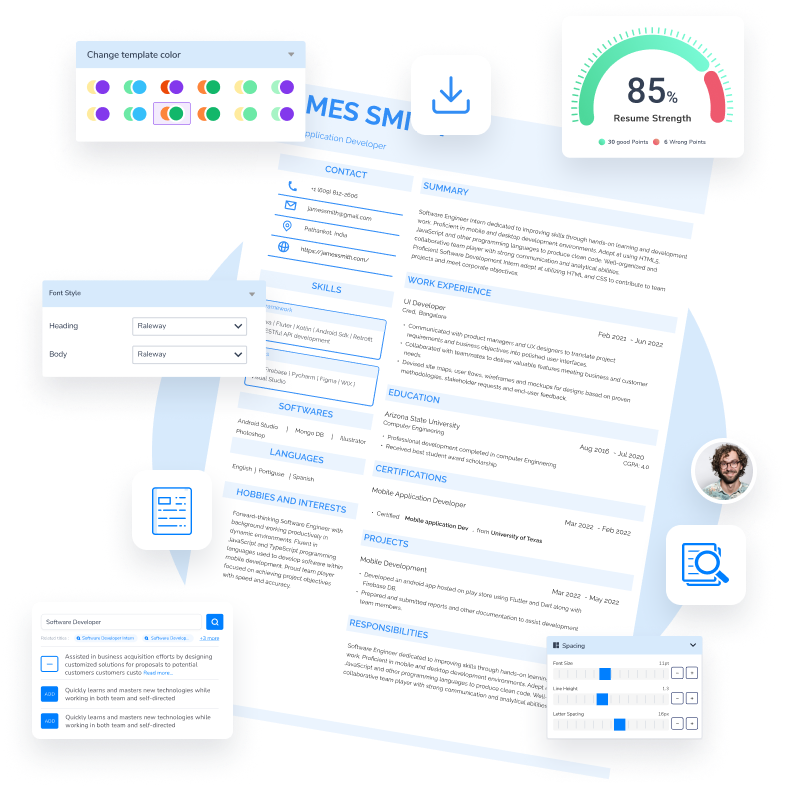
Try Now for Free!
